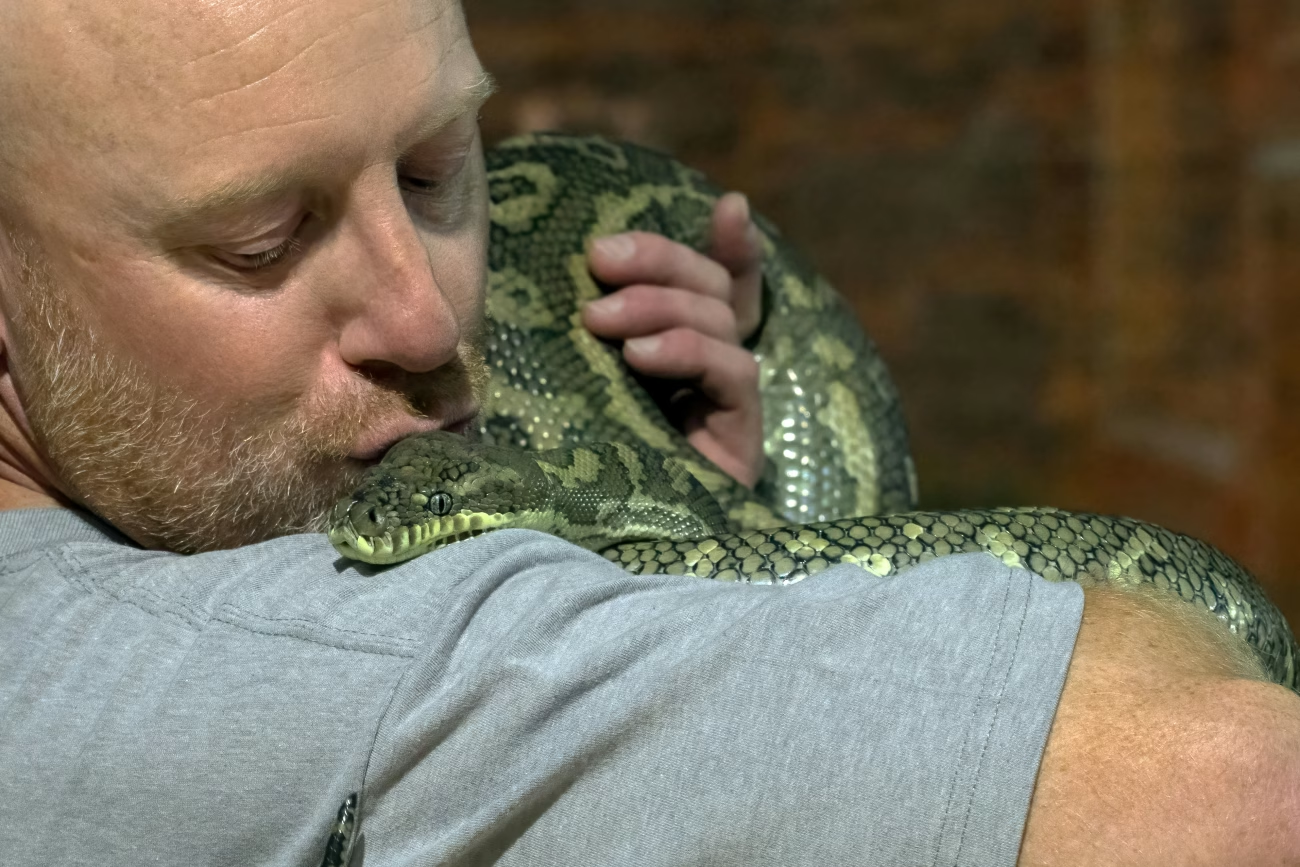The Allure of the Untamed
It starts innocently. A viral video shows a man cuddling a lion. A TikTok teen kisses a fox. A monkey wears pajamas and eats snacks at the dinner table. In a few seconds, the internet makes the wild look domestic. But behind the filters and novelty lies a truth rarely acknowledged: wild animals are not pets. Not truly. And trying to make them so often harms both the creature and the human who adores them.
Judgment takes a backseat to awareness in this article, because if we want to love animals (deeply, ethically, and long-term) we need to understand the difference between taming and respecting.
What “Wild” Really Means
A wild animal isn’t just “untrained” or “unfriendly.” Wild means their feeling, needs, and biology evolved for life beyond walls and cages. A cheetah, for exemple, is built for wide-open savannas. The same for a raccoon, it doesn’t just “get into things”.. its intelligence evolved from generations of foraging in unpredictable environments. Even if raised in captivity, wild animals retain most of their original behaviors. This includes:
- Territorial aggression
- Stress in enclosed spaces
- Unpredictable reactions to touch, noise, or scent
- Mating cycles that don’t align with human schedules
- Complex dietary needs not easily met by pet food
What we often label as “exotic” is actually unadapted. The illusion of domestication, especially on social media, hides a deeply unnatural compromise: the suppression of instinct for entertainment.
Domestication Isn’t Taming
Dogs didn’t become dogs overnight. Wolves that started showing less fear toward humans were slowly favored, bred, and selected over 15,000+ years. That’s domestication.
Taming, on the other hand, is a surface relationship. It might involve feeding or limited handling. But the animal’s wild traits remain fully intact. Even hand-raised wild cats like servals or ocelots still mark territory, attack unpredictably, or suffer from anxiety in human settings.
When Love Turns to Conflict
Many exotic animal owners start with love. They want a special connection. But over time, reality sets in.
A parrot, for example, may scream nonstop or self-mutilate when left alone too long. A tiger cub that seemed manageable becomes a 300-pound apex predator by age two. A sugar glider may bite, escape, or fall ill due to subtle dietary imbalances. And some owners resort to drastic measures (Clipping wings or teeth, Declawing, Solitary confinement, Rehoming to roadside zoos or unregulated sanctuaries)
Human Safety Is not Guaranteed
Even “smaller” wild animals can become dangerous. Raccoons carry zoonotic diseases like rabies and leptospirosis. Primates can transmit herpes B or display violent behavior during mating periods. Reptiles like pythons, often marketed as “easy exotics,” have caused deaths by constriction when mishandled.
The danger often goes unnoticed. Sometimes, the threat appears as chronic stress in children who fear their family’s “pet” lynx. Or it takes the form of emotional trauma in owners who struggle to meet their animal’s needs and helplessly watch them decline over time.
The Pet Trade’s Hidden Wounds: Behind many exotic pets is a story that doesn’t go viral.
The demand for wild animals fuels a vast, often illegal trade. While some species are bred in captivity, a shocking number are still taken directly from the wild, often as babies, separated from their mothers, and trafficked under brutal conditions. Many don’t survive the journey. Those who do often suffer silently in private homes, far from their natural world.
According to TRAFFIC’s 2023 report, the exotic pet trade poses serious threats to global biodiversity. Their new campaign highlights how lack of clear regulations across Europe allows endangered animals to be sold as novelty pets, despite the long-term damage this causes to ecosystems, animal welfare, and even human health.
Even when animals are bought legally, their lineage may be tied to illegal origins. Many buyers unknowingly support a market that profits from exploitation and ecological collapse. The cruelty often stays hidden until the animal becomes too difficult to manage or breaks down physically or emotionally in captivity.
But What About Animals Born in Captivity?
A common defense is: “My python was born in captivity, it doesn’t know the wild.” That’s true. But it does know instinct. A captive-born wolf still paces for miles. A macaque raised in a nursery still experiences dominance urges. These animals may not survive in nature, but that doesn’t mean they belong on couches.
Captivity doesn’t erase evolution. At best, it softens it. But behavioral problems often worsen in second- and third-generation captive animals because their needs remain unmet, just behind walls now.
There Are Exceptions.. They Prove the Rule
There are moments of magic between humans and wild creatures. Sanctuary workers form incredible relationships with rescued animals. Wildlife rehabbers nurse injured beings back to health. These connections are real and touching. But they’re based on respect, boundaries, and often, impermanence. The animal is a being with its own world and the humans are visitors, not owners.
Alternatives That Respect the Wild
If you’re drawn to exotic animals, here are other ways to engage meaningfully without harm:
- Support ethical wildlife sanctuaries and education centers
- Volunteer at animal rescue groups
- Sponsor animals through conservation programs
- Watch wildlife live cams or go on responsible eco-tours
- Share stories and facts that protect wild species rather than exploit them
True love for wild animals means loving them in ways that ensure their survival.
When Love Means Letting Wild Stay Wild
The desire to be close to something untamed is deeply human. It speaks to our own longing for connection, wonder, and uniqueness. But not everything beautiful wants to be tamed. And sometimes, the kindest act is to admire, protect, and step back.
Explore Wildlife Wonders & Stories on Pawlore:



3 thoughts on “Should Wild Animals Be Pets? Facts Most People Ignore”